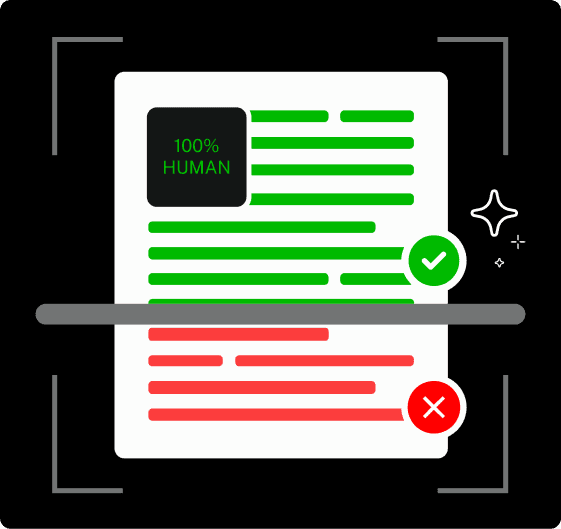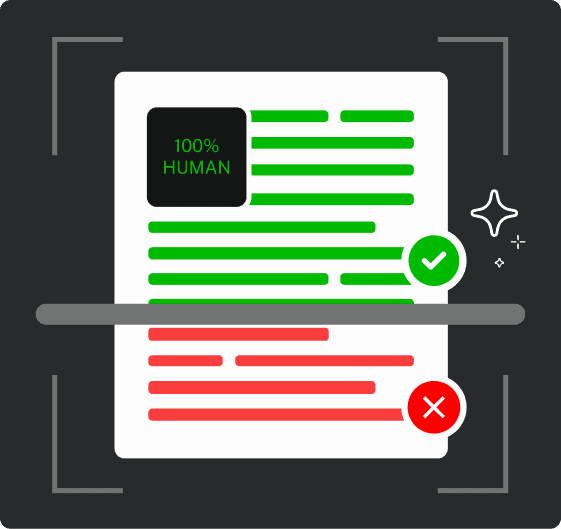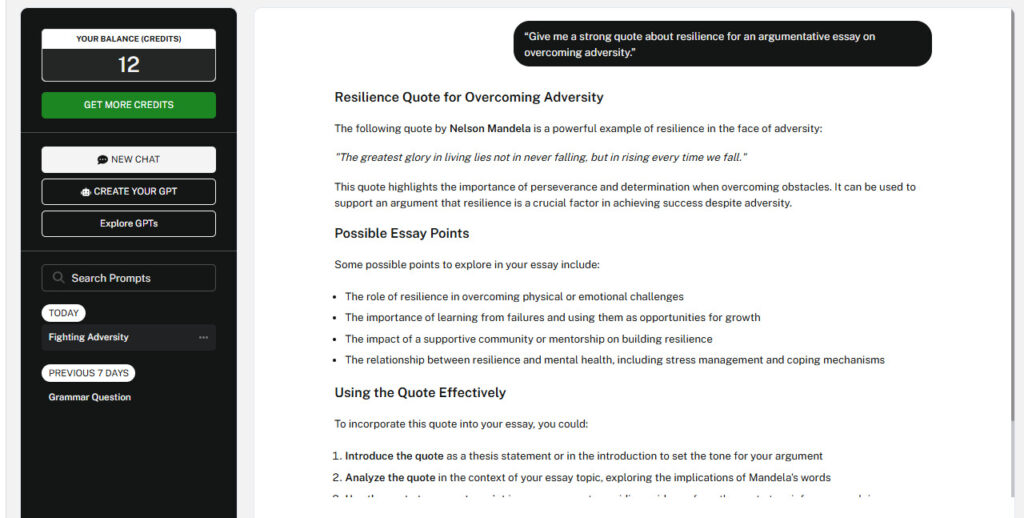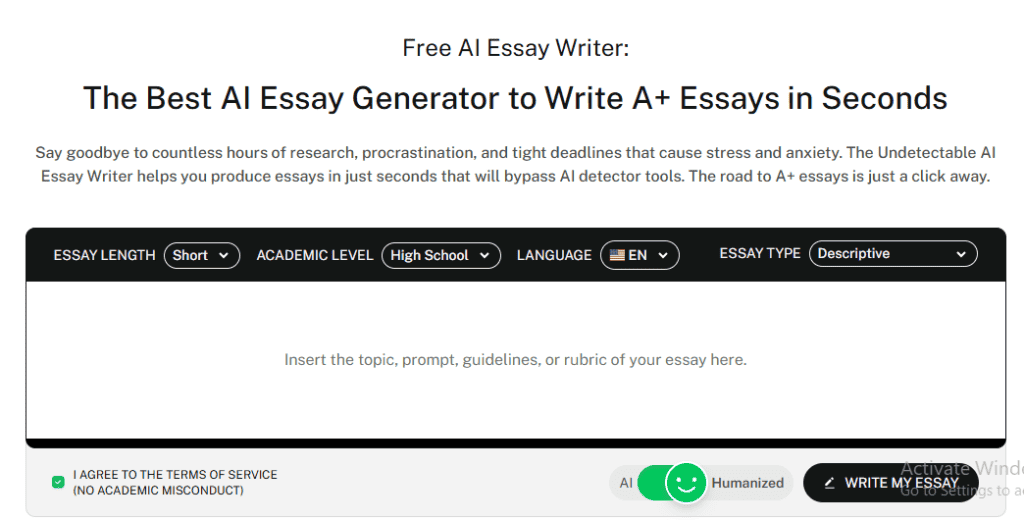Back in the day, you’d be rich if only you had a dollar for every essay that opened with “Be the change you wish to see in the world.”
Quotes still work in introductions, as long as you know how to use them well.
It may feel a bit cliché, like an easy way to add weight to your words. But if it‘s intentional and fresh (not just recycled), a quote can make your piece instantly engaging.
So, how come some of these land like a mic drop while others feel like they’re trying too hard to sound deep?
It comes down to three things: context, tone, and timing.
In this guide, we’ll explore everything from choosing the right quote to connecting it seamlessly with your thesis.
You’ll find practical examples, formatting tips, and expert advice that will transform your essay introductions from ordinary to compelling.
Let’s dive in and master the art of the quote-based opening.
When It’s Appropriate to Use a Quote
With dozens of essay types, understand that not every essay calls for a quotation in its opening line.
Like any writing technique, this approach works brilliantly in some contexts and falls flat in others.
Here’s how to know when a quote makes sense as your starting point:


Never Worry About AI Detecting Your Texts Again. Undetectable AI Can Help You:
- Make your AI assisted writing appear human-like.
- Bypass all major AI detection tools with just one click.
- Use AI safely and confidently in school and work.
- Academic essays: When your paper analyzes literature, responds to another author’s argument, or builds upon established research, opening with a relevant quote establishes context immediately.
- Personal statements: A thoughtful quote can reveal your values and perspectives, especially when you explain why the quote resonates with you.
- Persuasive essays: Starting with words from a respected authority on your topic lends credibility to your argument from the very beginning.
- Narrative essays: A quote that captures the essence of your story can create an emotional connection before you dive into personal details.
Avoid using quotes to open shorter essays (under 1000 words), technical reports, or scientific papers where directness is valued.
Similarly, highly formal assignments might benefit from a more straightforward introduction.
The key is authenticity.
Don’t force a quote where it doesn’t belong. If you’re struggling to connect your chosen quote to your thesis, it’s probably not the right opening for your essay.
How to Choose the Right Quote

The perfect opening quote serves as a foundation for your entire essay.
Here’s how to select one that strengthens rather than distracts from your writing:
- Relevance is non-negotiable. The quote must clearly connect to your topic and thesis. A beautiful but tangential quote will only confuse your reader about the direction of your essay.
- Consider your audience. A philosophy professor might appreciate Nietzsche, while a general audience might connect better with a contemporary figure they recognize.
- Length matters. Your opening quote shouldn’t exceed 2-3 lines on the page. Anything longer delays your own voice and risks losing your reader’s attention.
- Source credibility counts. Quotes from recognized experts, historical figures, or primary sources relevant to your topic carry more weight than random internet quotes.
- Look for complexity and depth. The best opening quotes contain layers of meaning that you can unpack throughout your essay.
- Avoid clichés. Quotes like “To be or not to be” are used so often that they lose impact. Seek out fresh perspectives or unexpected sources.
- Test for tone alignment. The quote’s emotional tone should match the essay you’re writing. A humorous quote doesn’t work for a somber topic.
You’ll find that most academic writing guides emphasize the same core principles when it comes to how to use quotations in formal writing: clarity, precision, and connection to your argument.
Master those, and your opening quote won’t just grab attention but set the tone for everything that follows.
And when you’re stuck looking for the perfect quote, technology can be your best research assistant.
Undetectable AI’s AI Chat can help you discover quotes relevant to your specific topic, and even help with an essay outline.
If you’re not sure where to begin, simply describe your essay focus, and the tool can suggest quotes from appropriate sources, including academic figures, literature, or thought leaders.

Example prompt:
“Give me a strong quote about resilience for an argumentative essay on overcoming adversity.”
It saves time and helps you choose quotes that genuinely support your argument rather than just add fluff with something vaguely inspirational.
How to Introduce the Quote
Even the most powerful quote misses the mark without a proper introduction. The way you lead into your chosen quote determines how effectively it works with your essay.
Here are techniques for smooth integration:
- Provide context first. Before dropping in your quote, give readers the background they need to appreciate its significance.
- Name the source with authority. Introduce the author with relevant credentials that establish why we should care about their words.
- Use signal phrases. Expressions like “As philosopher Hannah Arendt observed,” or “Scientist Marie Curie emphasized” create a natural transition to the quoted material.
- Avoid floating quotes. Never simply place a quote at the start without any introduction, as it creates a jarring, disjointed reading experience.
Here’s an example of an effective quote introduction:
Weak introduction:
“Education is the most powerful weapon which you can use to change the world.” This quote shows that education matters.
Strong introduction:
When reflecting on the transformative power of learning, civil rights leader Nelson Mandela asserted that “Education is the most powerful weapon which you can use to change the world.” His words, spoken after emerging from 27 years of imprisonment, capture the liberating potential of knowledge that this essay explores.
Notice how the strong example doesn’t just provide the source but explains why the quote matters and previews how it connects to the essay’s focus.
How to Connect the Quote to Your Thesis

The true skill in using a quote to open your essay lies in the transition from someone else’s words to your own ideas.
This bridge connects your attention-grabbing quote to your thesis statement.
Here’s how to build it effectively:
- Explain the quote in your own words. After presenting the quote, briefly interpret what it means, especially if it contains metaphors or complex language.
- Highlight the key concept that links to your thesis. Identify the specific idea in the quote that relates to your main argument.
- Use transitional phrases. Words like “This perspective illustrates,” “This concept underlies,” or “This sentiment reflects” help readers follow your thought process.
- Create contrast if needed. Sometimes your argument might partially disagree with the quote. Phrases like “While Lincoln correctly identified the importance of unity, today’s political landscape reveals…”
End with your thesis. After connecting the quote’s meaning to your topic, present your specific argument or position.
Here’s this connection in action:
“The past is never dead. It’s not even past,” wrote William Faulkner in his 1951 novel Requiem for a Nun. Faulkner’s insight about how history continues to shape our present moment perfectly captures the ongoing influence of colonial policies in modern urban development. By examining Boston’s neighborhood boundaries, this essay demonstrates how 19th-century redlining practices continue to determine community resources and opportunities even in 2024.
This paragraph moves smoothly from Faulkner’s words to the specific thesis about Boston’s neighborhoods.
Formatting Rules for Starting with a Quote

Beyond content, the technical aspects of presenting your opening quote matter too.
Different citation styles have specific requirements for formatting quotes, but these general principles apply across most academic writing:
- Quotation marks: Always enclose the quoted material in double quotation marks unless it’s a block quote.
- Block quote format: If your opening quote exceeds 4 lines (MLA) or 40 words (APA), format it as a block quote—indented, without quotation marks, with the citation after the final punctuation.
- Citation: Include an in-text citation with the quote, even in your introduction. The format depends on your required style guide.
- Capitalization: If you begin your essay with only part of a sentence, do not capitalize the first word unless it was capitalized in the original.
- Ellipses and brackets: Use ellipses (…) to indicate omitted material and brackets [like this] to insert your own words for clarity.
- Punctuation: In American English, periods and commas go inside quotation marks; semicolons and colons go outside.
Here’s the correct formatting for MLA style:
In her landmark study of resilience, Dr. Angela Duckworth states that “grit—a combination of passion and perseverance—is the defining characteristic of high achievers” (Duckworth 42).
For APA style:
In discussing identity formation, Hall (1996) argued that “identity is formed at the unstable point where the ‘unspeakable’ stories of subjectivity meet the narratives of history” (p. 115).
Always double-check the specific requirements of your assigned citation style, as details can vary significantly.
Examples of Strong Essay Openings with Quotes
Let’s examine several effective essay openings that use quotes across different topics and styles. Each demonstrates key principles of successfully integrating quotes.
History Essay Opening:
“History is a nightmare from which I am trying to awake,” wrote James Joyce in his novel Ulysses. For the citizens of Dresden in February 1945, this literary metaphor became a literal reality as Allied bombing transformed their sleeping city into an inferno. The controversial military decision to target this cultural center raises essential questions about the ethics of total warfare that continue to haunt military strategists today.
Literary Analysis Opening:
Virginia Woolf observed that “fiction is like a spider’s web, attached ever so lightly perhaps, but still attached to life at all four corners.” Nowhere is this delicate connection between imagination and reality more evident than in Gabriel García Márquez’s One Hundred Years of Solitude, where fantastical elements illuminate harsh political realities in ways that straightforward reporting never could.
Persuasive Essay Opening:
“The world breaks everyone, and afterward, some are strong at the broken places,” wrote Ernest Hemingway in A Farewell to Arms. This notion of post-traumatic growth forms the foundation of modern resilience psychology, yet our educational system rarely incorporates resilience training despite mounting evidence of its effectiveness. By implementing structured resilience programs in middle schools, administrators can significantly reduce anxiety rates while improving academic performance.
College Application Essay Opening:
When astrophysicist Neil deGrasse Tyson said, “We are all connected: To each other, biologically; to the earth, chemically; to the rest of the universe, atomically,” he expressed the same wonder that drove me to build my first telescope at age twelve. Standing in my backyard tracking Jupiter’s moons, I discovered my place in something vastly larger than myself—a perspective that has shaped my academic journey ever since.
Each example establishes context, presents the quote with proper attribution, explains its significance, and connects it to the essay’s main argument.
Notice how the writer’s voice remains central even while featuring someone else’s words.

Ready to craft your own compelling essay introductions?
Undetectable AI’s AI Essay Writer can help you generate ideas, find perfect quotes, and structure your opening paragraphs for maximum impact.
Our AI assistant understands academic writing standards while adapting to your unique voice.
Explore our AI Detector and Humanizer effortlessly in the widget below!
FAQs: Using Quotes in Essay Intros
Can I use quotes from movies or songs?
Yes, especially for informal or creative essays. Just be sure to cite the original creator (not the actor), check the wording, and choose quotes with real substance.
For academic papers, check if your instructor allows non-traditional sources.
Do I always have to cite the quote?
Yes. Even familiar phrases should be cited unless they’re truly common knowledge.
Citing builds credibility, adds context, and keeps your work plagiarism-free. Use your assigned style guide for proper formatting.
What if the quote doesn’t fully match my thesis?
That’s okay, just connect the dots. You can frame it as a broader principle, a partial fit, or even a counterpoint.
As long as you explain the link clearly, it strengthens your argument.
Line One Matters More Than You Think
Starting your essay with a quote can transform an ordinary introduction into something memorable and compelling.
When selected thoughtfully and integrated skillfully, a quote establishes authority, captures interest, and provides a foundation for your unique ideas rather than simply filling space.
Remember that the quote itself isn’t the star of your essay.
The most effective quoted introductions use another’s words as a springboard for original thinking.
Your analysis, interpretation, and application of the quote are what demonstrate your critical thinking abilities.
As you practice this technique, you’ll develop an instinct for which quotes truly enhance your arguments and which merely decorate them.
Start collecting powerful quotes related to your field of study in a personal database and use Undetectable AI tools to generate and organize high-quality, topic-relevant quotes whenever you need them.
When it’s time to write, you’ll already have strong material that fits your topic.
